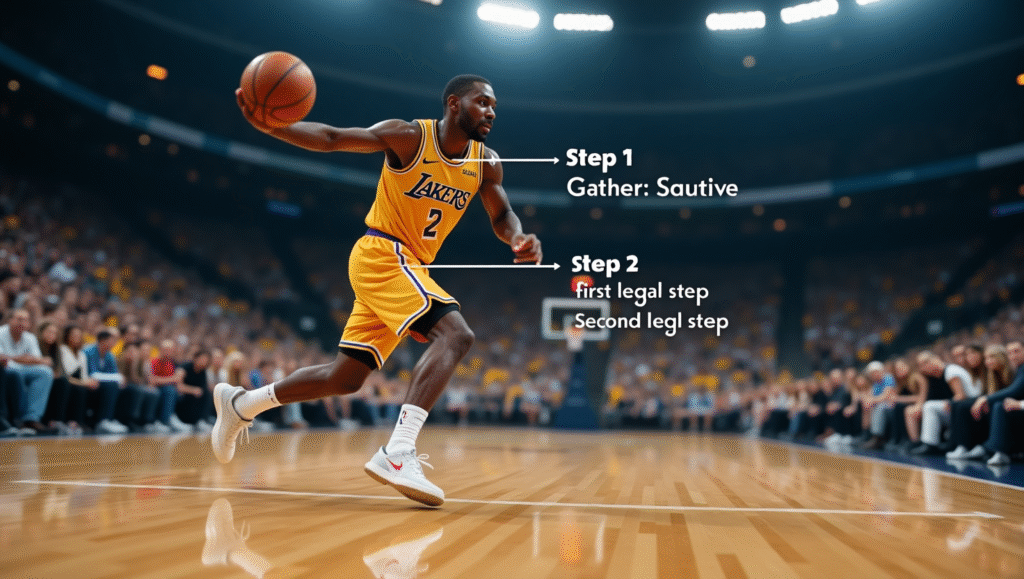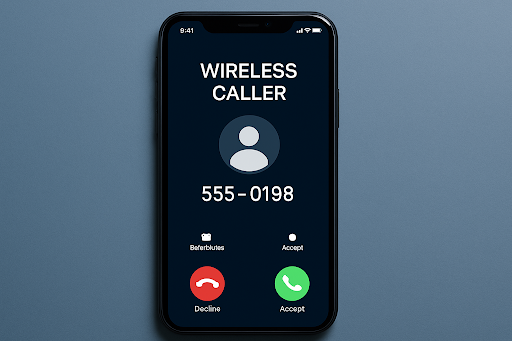
When you’re a fan of the NBA, you must have asked yourself: How many steps can a player take without dribbling? The answer is not simply a number. The enforcement is where things get tricky! While there are solid rules, their interpretation is open for debate based on the league, context, and the situation in the game. In the NBA, what we call a “travel” is tightly enforced, but rarely understood. This blog will take a look at the process of legally and illegally taking steps, what the NBA does that’s different than other leagues, and why it’s such a debated topic.
Understanding the Traveling Rule in the NBA
In the NBA, traveling refers to taking too many steps without dribbling. According to the official rules, players who have possession of the ball are allowed two steps after they have gathered the ball. Anything beyond this without passing, shooting, or dribbling with the ball will be considered traveling.
Key points from the NBA traveling rule:
- The “gather step” does not count, so the two steps can be taken after the gather.
- The step count begins once the player has control of the ball.
- Players can take two steps after gathering.
What is the “Gather Step,” and Why Does It Matter
The gathering step was introduced and officially recognized in 2019. It clarified one of the ambiguities in the NBA. Prior to it being explicitly defined, referees used their discretion to determine at what point possession started, and now it’s standardized.
NBA Rules Steps Take in Basketball: Understand how many steps players can take, what counts as traveling, and the footwork rules that guide movement without dribbling in the NBA.
Definition:
- A ‘gather step’ is when a player gathers the ball and makes the two legal steps.
- It is the step that occurs just before the two steps that are allowed before a pass or shot.
In all effective purposes, the new rule allows players to take three steps (gather + 2) before a travel call, which can sometimes be confusing for the untrained viewer who thinks that the referee has missed a travel call.
NBA vs. FIBA and NCAA: Step Rule Differences
The gather step is not allowed in all other basketball leagues, such as FIBA and the NCAA.
- FIBA Rules: Players are allowed only two steps once they have possession, so no gather step.
- NCAA: Same concept as FIBA, but they give the referee more discretion on what they allow.
This means that moves that are legal in the NBA would be considered a travel in other leagues (James Harden’s step-back dribble or Giannis Antetokounmpo’s euro-step dribble).
Common Moves that Stretch the Limits
Several moves in the NBA come close to a traveling call, but can actually occur legally due to the gather step. Here are some of them:
- Euro-step: A quick two lateral steps (forwards laterally) after the gather is completed, to evade a defender.
- Step-back jumper: Players like Luka Dončić, James Harden, and others utilize a gather at their own volition, so the two degrees backward from the gather can take place.
- Spin move: Not really a gather move, but they spin. A player performs a spin gather and gets to finish with two legal steps.
Understanding their legality relies on knowing the exact moment the gathering takes place.
Why NBA refs get criticized for “Missed” Travels
There are mega fans that will contend, among other things, that there are too many missed travels when players are in transition or making highlight film plays. However, the problem lies with fans!
- Replay: Slow motion replay can make a step look like 2, amplifying the number of steps.
- Speed and agility of players: Makes it impossible to triangulate just when the player gathers in real time.
- Ref and discretion: Clearly defined aspects of the rules are often open to different interpretations amongst officials, even if their judgment is functioning well.
Considerations for Youth and Amateur Basketball
One drawback of NBA travel rules is that they can inform youth and amateur players that they can perform moves like their favorite stars (subtly explaining why they think they can mimic these moves, but not inviting their understanding that the moves could be illegal in their leagues).
- Coaches need to teach the differences in emphasis on rules.
- Youth leagues most often use FIBA or NFHS rules, and steps that aren’t allowed in those rules aren’t allowed in youth leagues.
How Technology is Impacting Enforcement Control
With HD cameras, AI, and instant replay becoming the norm in professional sports, enforcement of traveling in professional sports is changing regarding:
- NBA Replay Center: Allows for replay review on late-game situations involving possible travel.
- Coach’s challenges: Although traveling normally is not part of eligibility for challenges, it can be deemed acceptable at certain moments.
- Future AI might provide a standard for determining the transition into a gathering.
The Importance and Relevance of Footwork and Practice
Elite NBA players spend countless hours perfecting the use of legal footwork. Their timing of the perfectly executed gather step, while remaining in the rules, is a learned skill, not a hack.
- Kobe Bryant, Michael Jordan, and Hakeem Olajuwon were taught and graded for their footwork.
- Modern stars like Stephen Curry or Jayson Tatum are using legal footwork to create space, without traveling.
Final Thoughts
The number of steps one can legally take in basketball is more complex than it seems, especially in the NBA. The “gather step” included in the NBA allows players to basically take three steps, which can confuse viewers familiar with high school or college basketball. To answer whether a move is a legal move, it is important to understand when possession is established.
Possessing the basketball is of utmost importance to understanding the traveling rules. While it is common for fans to criticize the traveling rule, there is always an interpretation of a rule that is misunderstood, versus just ignoring or enforcing the rule.
Understanding the rule can increase the appreciation of the game for fans, coaches, and players, and help distinguish between being flashy and taking strides to fundamental excellence.
FAQS
Can NBA players take three steps without dribbling?
Yes, if you count the gather step and then the two legal steps.
What is the ‘gather step’?
This would be when the player gains control of the basketball before taking steps out of the gather phase.
Is traveling enforced less in the NBA?
Traveling is not less than a different set of rules, and it is commonly misunderstood because of the differences in travel rules.
Is the euro-step legal in basketball?
Yes, if executed in proper perspective and according to the gather + two-steps rule, this is a legal move.
Why do moves look like travels in slow motion?
Slow-motion replays break down our perception of timing, thus legal moves appear illegal.


